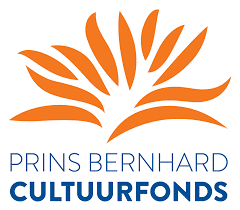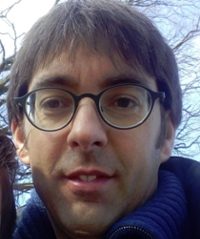A two-day workshop held at the KNIR, 28-29 June 2022, organised by Anita Casarotto, Tymon de Haas & Tesse Stek, with the generous support of the Prins Bernhard Cultuurfonds and the KNIR.
The phenomenon of centuriation played a crucial role in Rome’s imperialistic expansion. These large-scale land division systems drained and parceled out the lands conquered by Rome, and transformed thousands of square kilometers throughout the Mediterranean into rationally ordered, agricultural landscapes. As such, they are considered one of the most powerful symbols of Rome´s triumph over indigenous peoples, and nature itself.
On closer inspection, however, many questions regarding the function and historical context of centuriations remain unanswered. This is largely the result of a persistent scholarly focus on the reconstruction of these systems; this rightly highlights the massive scale of centuriations and their role in the evolution of cultural landscapes, but tells us little about their chronology and impact on settlement and land use. Moreover, few attempts have been made to draw together the evidence from the many regional reconstructions into a broader synthetic framework.
Several methodological innovations (e.g., GIS applications, remote sensing techniques, geo-archaeological work, field survey, excavations and environmental studies) contribute to advance the study of centuriated landscapes. In various contexts, scholars now combine the morphological reconstruction of centuriations with the archaeological study of their physical remains (roads, ditches) and associated settlements. Such more integrated approaches may provide important new insights into the context in which centuriations were laid out and the actual impact they had on, amongst others, environment, settlement and economy.
This workshop seeks to bring together some of the leading research groups working on centuriated landscapes in Italy, Portugal and Spain. Its aim is twofold: first, to exchange ideas by comparing methodologies and approaches of these different groups and reviewing the historical insights they have generated; and second, to establish a common research agenda and explore possibilities for future collaborations between different research groups. To this end, the first day will present a series of papers highlighting recent work on centuriations in Italy and the Iberian peninsula by the various research teams; this is followed on day 2 by two keynotes that forms the starting point for a roundtable discussion to establish a common research agenda and discuss potential collaborations.
Program
Tuesday 28 June
9:30-10:00 Coffee/Tea Break
10:00-10:15 Welcome (Dr. Tesse Stek)
10:15-10:30 Introduction (Dr. Casarotto/ Dr. De Haas)
Session 1: Centuriation research in Italy
10:30-11:00 Centuriated Luceria: past, present and future research
(Yeong-chei Kim, Seoul National University)
11:00-11:30 Centuriated landscapes and early Roman Imperialism in central Tyrrhenian Italy: an integrated archaeological approach
(Tymon de Haas, University of Groningen)
11:30-12:00 Coffee/Tea Break
12:00-12:30 Centuriated landscapes of the Middle Adriatic area. The land division of Picenum and Gallic countryside
(Enrico Giorgi, Università di Bologna)
12:30-13:00 “It’s a great game of chess that’s being played”. The moves across the centuriations of the Decima Regio
(Jacopo Turchetto, Università di Padova)
13:00 – 13:30 What happens after the Romans to a centuriated landscape: examples from the hinterland of Ravenna
(Michele Abballe, Ghent University/University of Verona; Marco Cavalazzi, University of Bologna/Michigan University; Celeste Fiorotto, University of Verona/Ghent University)
13:30-15:00 Lunch Break
Session 2: Centuriation research in the Iberian peninsula
15:00-15:30 The archeomorphological analysis of centuriated landscapes: the case studies of Valentia, Saguntum and Saetabis
(Maria Jesús Ortega, Josep Maria Palet Martínez, Catalan Institute of Classical Archaeology)
15:30-16:00 The centuriated landscape of Libia (Herramelluri, Spain): Intensive survey on the Valpierre plain
(Enrique Ariño Gil, University of Salamanca)
16:00-16:30 The centuriated landscape of Augusta Emerita through LiDAR technology
(Tomás Cordero Ruiz, Universidade NOVA de Lisboa)
16:30-17:00 Coffee/Tea Break
17:00-17:30 The Bracara Augusta territory: aspects of a centuriated landscape (Hispania Citerior Tarraconensis)
(Helena Carvalho, Universidade do Minho)
17:30-18:00 The centuriated landscape of Pax Ivlia from an archaeogeographical perspective
(Maria da Conceição Lopes, Universidade de Coimbra)
18:00-18:30 concluding remarks
(Tesse Stek, KNIR)
Conference diner
Wednesday 29 June
9:30-10:00 Coffee/Tea Break
10:00-10:45 Keynote 1: Divided Landscapes in Ancient Italy
(Jeremia Pelgrom, University of Groningen)
10:45-11:30 Keynote 2: Centuriated landscapes in North-Eastern Hispania Tarraconensis. Conception and perspectives from Landscape Archaeology approaches
(Josep Maria Palet Martínez, Catalan Institute of Classical Archaeology)
11:30-12:00 Coffee/Tea Break
12:00-15:00 Roundtable discussion
With special thanks to our sponsor




